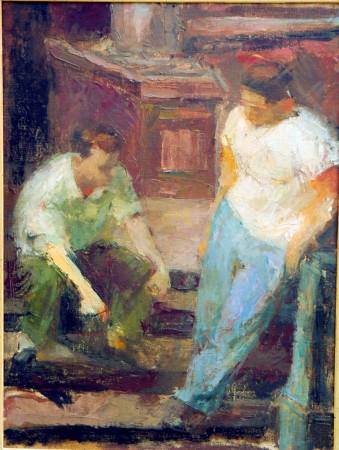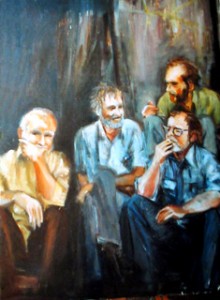Admin Options
Artists have traditionally staged a subject for a painting, whether it was a person or model, as the case may be, in the dress or with the props that tell a story of some sort.Caravaggio comes to mind immediately, with his elaborate scenes, painted using as his models grocer’s delivery boys dressed as Bacchus, or a street friend dressed as Mary Magdaline.And as we progress forward in time , we see portraits done by John Singer Sargent of women in fabulous ballgowns and men in tuxedos and top hats. Certainly not your everyday dress by any means…I think the point and the fun is in being remembered by future generations with your most elegant foot forward!I collect vintage clothing, and early on I had started taking photos of some of my most unusual the dresses.I decided to do the above self portrait painting of me, wearing one of these victorian outfits. Dressing up is fun in itself, but if you can do something even more with the photograph, it’s even better!I’d love to do more paintings with staged dress up , and in fact I did several portraits of friends dressed up in various Victorian outfits, including children, because I had some turn of the century children’s straw hats which are perfect portrait props!I just wanted to share this aspect of vintage collecting, and what it has meant to me in relation to my painting!Thanks for reading this!Gemma InsinnaTags: Art, Caravaggio, clothing, Gemma Insinna, John Singer Sargent, paintings, Sargent, , vintage
The simple things of ordinary life have always been captured in art throughout history.
Even on the walls inside the tombs in ancient Egypt, or the ruins of Pompeii, there are everyday scenes, glorifying these moments for posterity. They give us a glimpse of what the customs were, the food, the clothes, and the activities.
The most remarkable ones are those depicting a simple everyday scene .
In the above painting by Michael Insinna, the figures are doing nothing but talking on a street corner, in front of an ordinary apartment building in New York. Yet it is a wonderful look back in time, and in mood. A recollection that came through to us today, an ordinary street scene .
This particular scene is from the 1950’s , but you can still see pretty much the same thing going on in every city everywhere.
Robert Henri was one of the teachers at the turn of the century that brought out the importance of drawing the everyday scenes and people that his students saw throughout the day.
His followers at the Art Students League in New York continued in this tradition, and Michael was part of that in the 1940’s and 1950’s, studying with Henri’s disciple, Robert Brackman.
He told them of the importance of keeping a note pad always handy for capturing a particularly picturesque place or moment, to then go back to and develop a painting later.
This is what was developing in New York, from the 1900’s on through the 1920’s and then on through the 1950’s. Early on it became known as the Ash Can School, because they were accused of painting the most banal of subjects.
Edward Hopper was another artist that really captured those plain and simple places, and figures, doing nothing but living a moment captured and sketched. He filled books and books with his notes, even with details on the color and the light! You can see some of his art and info here on Artsy.
Of course Leonardo Da Vinci also noted to his assistants many times the importance of drawing everywhere, and he himself filled many notebooks, called codexes, and kept a leatherbound pad of paper on a chain on his belt when he went about the towns and cities searching for just the right face for his paintings. Or simply to draw figures doing some everyday chore.
I myself had the good fortune to capture with my 35mm camera four men talking on the street in the Bowery, in Manhattan. It was back in the early 1980’s.
In the midst of a very animated conversation, I passed by them in a cab and snapped the photo. The interesting thing I think is that one guy is looking right at me as I whizzed by in that split second.
The resulting painting is below.
Ordinary street life, with the benefit of the camera, I think is easier than a note pad , but Robert Henri and daVinci did very well without it!
Thanks for reading this,
Gemma
I’d like to tell everyone who is interested in learning about internet marketing some of my most recent experiences, in hopes that this can encourage those who would like to learn more about working online, to take some of the steps I did!
I have been learning how to utilize the internet for sales of my artwork and recently I have been also selling vintage clothing, jewelery and accessories, not just your usual internet stuff…
Once I photographed the vintage stuff, I posted them on 2 different sites;
Etsy http://www.etsy.com/shop/Gemma2010
and Vintage Network
http://vintagenetwork.ning.com/profile/GemmaInsinna
All of my know-how ( so far) I owe to the fact that almost 4 months ago I joined an internet marketing community called 12Second Commute.
It is truly a community, because I have been learning how to use their software tools to build my home marketing business , and I can definately say that I have taken full advantage of their online interactive conferences and skype chats to ask questions and follow their instructions and advice .
For example, I learned about the Capture Page Creator tool, and went and made a capture page for 2 separate projects of mine, and began posting the links on my Face Book and Twitter. It was easy, and fun too!
This one is about my watercolors I do from your favorite photo
http://www.12path.com/PB/12wccp/
I started blogging to get the word out about 12sc, because I signed on as an affiliate, marketing their system, which practically markets itself once you take a look and see how it builds around the tools and the info to guide you on your way!
I went on to blog about my art, and my parents art,
http://www.gemmainsinna.net/blog/
and have continued to progress daily toward my goal of marketing diverse products and creations online. Whenever I get stuck or need advice as to how best to proceed , I can post a question in the 12sc skype chat and someone will always respond, or I can contact my sponsor or directly contact customer support and receive help very fast, usually from Darryl Graham the owner !
Even this Posterous blog is a direct result of yet another conference class!
I will continue to tie things together here and make announcements and posts !
Thanks for reading this!
All the best,
Gemma Insinna
for more info:
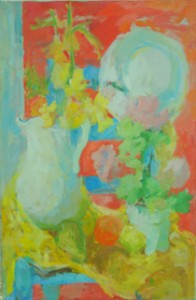
Michael’s Sunny Stilllife |
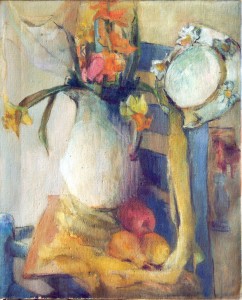
Cappi’s Afternoon Stillife |
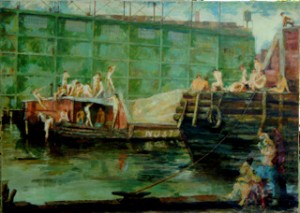 “If you are to be an artist, you must first learn to draw and draw expressively.You must do this before you can paint. Only then will you be able to make yourself, your aims, and your thoughts fully understood”.
“If you are to be an artist, you must first learn to draw and draw expressively.You must do this before you can paint. Only then will you be able to make yourself, your aims, and your thoughts fully understood”.
